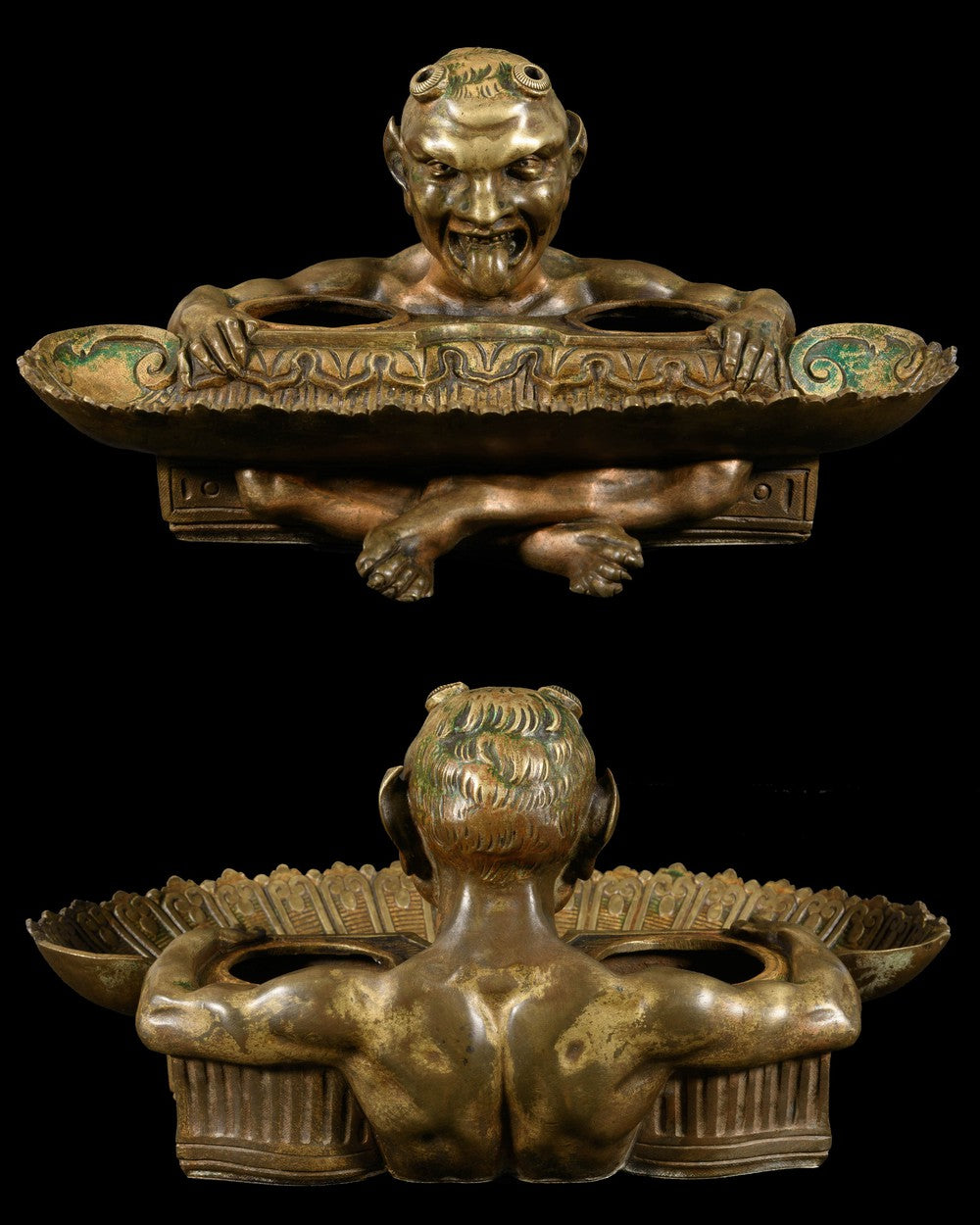Our prices are in euros, the prices converted in dollars or other currencies can vary according to the rate.
Free Worldwide Shipping – Secure and Protected Delivery
ref: #RK00-462Couldn't load pickup availability
This bronze inkwell, depicting the devil sitting cross-legged, is a fascinating work of art that speaks to both the richness of 19th-century decorative art and the appeal of dark, symbolic figures. The image of the devil, often associated with transgression and temptation, here lends itself to an everyday, utilitarian function: to hold ink and quills. Interestingly, the devil's horns are used as holders for the quills, a symbolic choice that combines both the instrument of writing and the power of temptation and free thought, often seen as subversive at the time.
The two ink tanks resting on his knees suggest a figure who is both protective and domineering, carefully guarding these essential tools for creation. The shell-shaped tray perhaps evokes the sea, an element often associated with infinity and the unknown, reinforcing the idea that the devil is an ambivalent figure, both guide and trap. The cross-legged posture, traditionally associated with meditation or calm, contrasts with the classic image of the devil as tormented and tortured, suggesting here a balance between temptation and reflection.
This object is not simply a functional inkwell; it embodies a deeper reflection on the connection between art, writing, and the power of transgression. This type of rare and precious object reveals a fascination with mystery and the occult, while offering a unique example of how 19th-century artists and artisans reinterpreted mythical figures to enrich everyday life with symbolism and complexity.
Good condition, beautiful patina of the original gilding
PERIOD : 19th century
DIMENSIONS : 25cm X 15cm
SIZE : 9.8" X 5.9"
In the 19th century, the devil deeply fascinated the collective imagination, particularly because of social, cultural and religious upheavals. In the era of Romanticism, writers such as Baudelaire and Goethe used the figure of the devil to question the relationships between good and evil, freedom and transgression. The devil became a symbol of revolt against the established order, embodying the desire for individual emancipation from moral and religious conventions. In the arts, he is often associated with an aesthetic of darkness, mystery and prohibition. This fascination was also fueled by the rise of occultism and esotericism, which, in reaction to rising scientific rationality, called into question the boundary between the sacred and the profane. The devil thus embodies both temptation and damnation, a reflection of modern anxieties and the need for escape from the certainties of the time.



